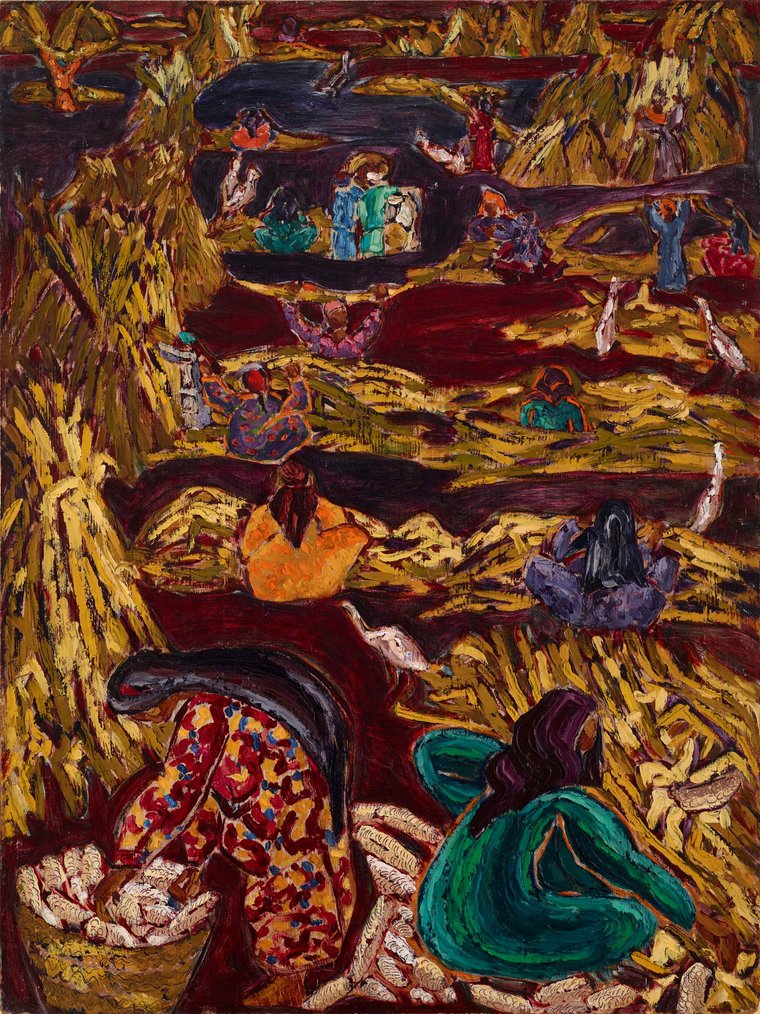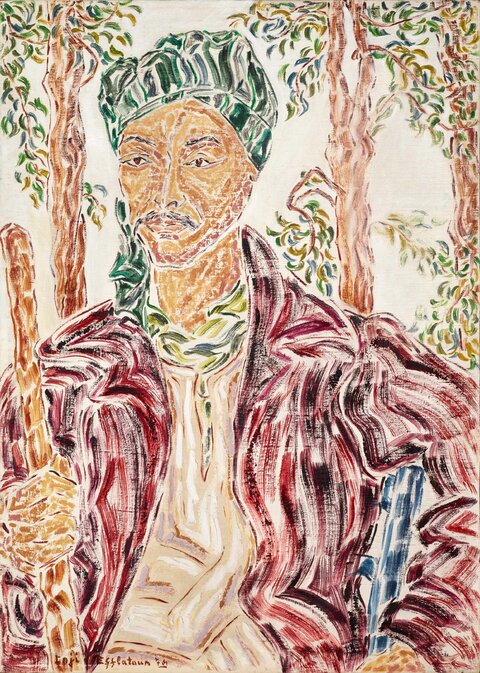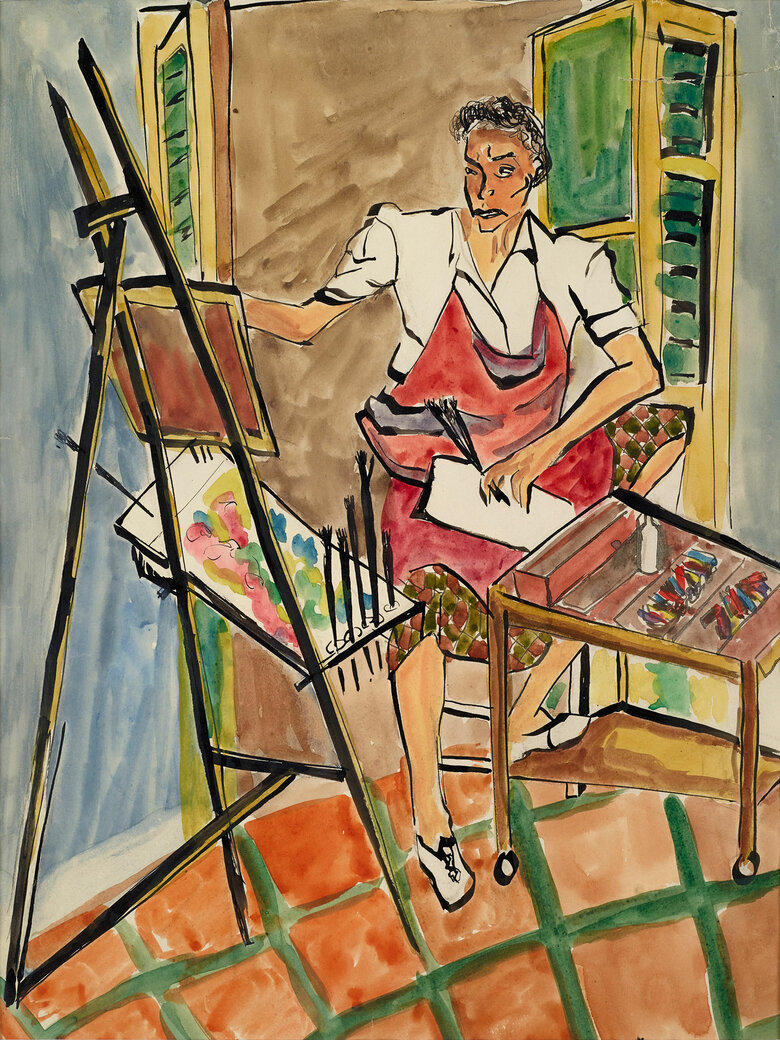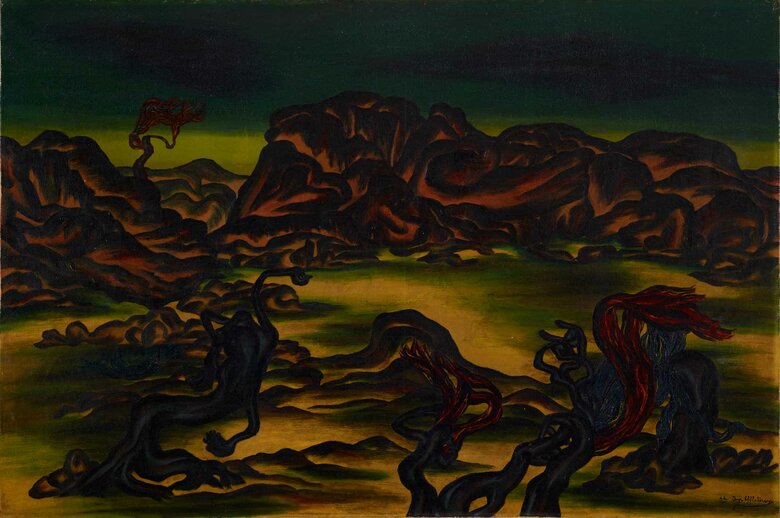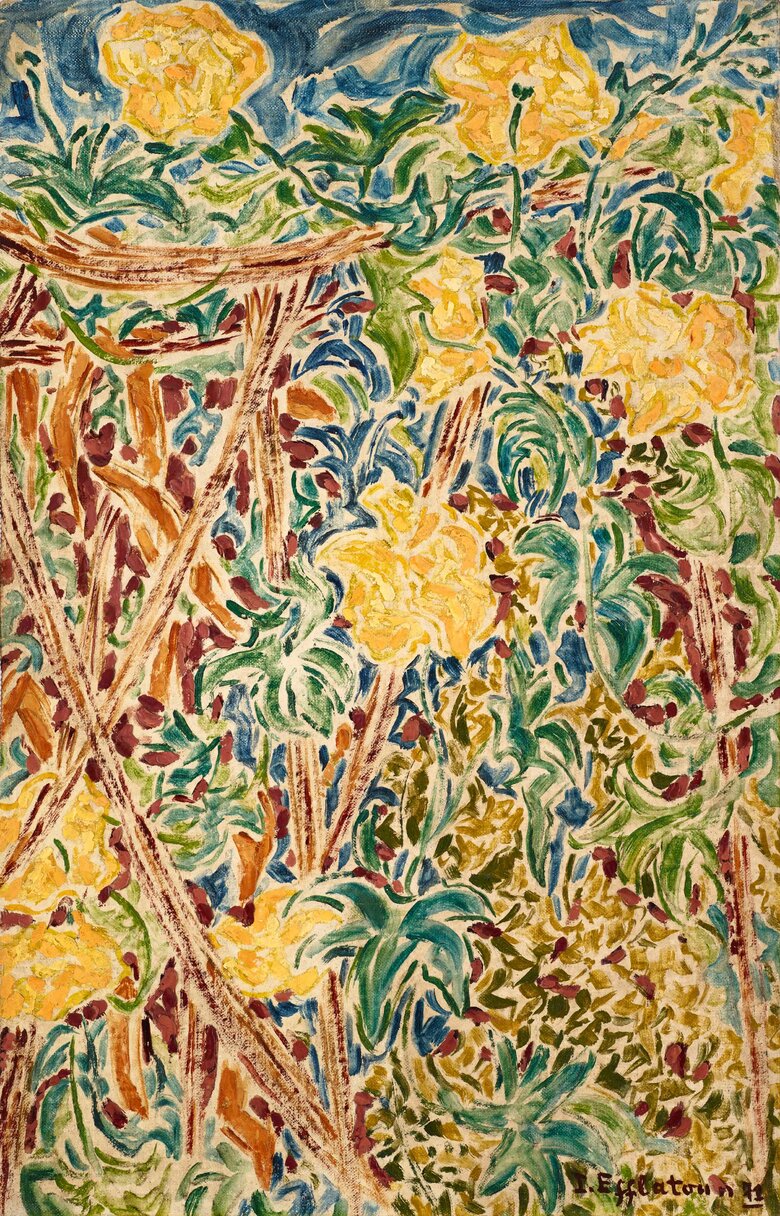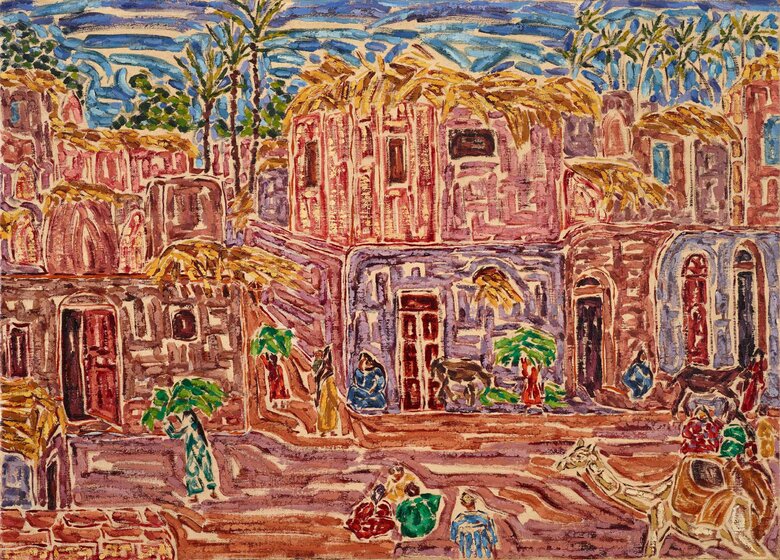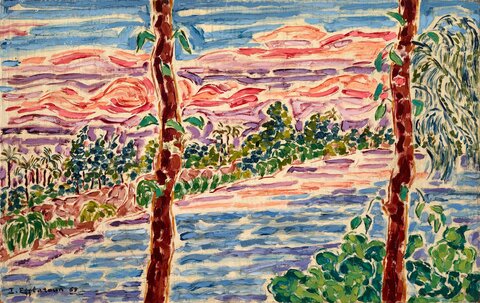Collecting Luffas, 1969, by Egyptian artist Inji Efflatoun reveals the lives and work conditions of laborers, especially women, emphasizing the connection between the workers and their physical efforts. The piece shows a community of workers, primarily women, across a field as they sort and collect the dried luffas. The brushstrokes are layered like blotches on top of each other, showcasing this element of her characteristic style during this period. The women are depicted performing the labor, while also, in some instances, taking care of their infant children. Although there is a vibrancy and dynamism to the piece, the movement of the subjects and their interactions suggest a serenity of sorts – just another day at work. It is an honest depiction of the multiple levels of labor that women had to engage in simultaneously, especially if they belonged to the working class – a theme that Efflatoun was especially interested in throughout her oeuvre.
Efflatoun grew up in a wealthy and francophone family of landowners, which privileged her with a strong education across literature and philosophy. At the age of 15, she was tutored in the arts by Kamel El Telmissany, and was greatly influenced by the surrealism and political agenda of the Art et Liberté group with their focus on freedom of expression and stance against the threat of fascism. In 1945, she became the first woman to be enrolled in the Faculty of Arts at Cairo University, and her style shifted away from the surrealism of the earlier period into impressionism. She also became a dedicated political activist and feminist, co-founding with novelist Latifa Al-Zayyat the feminist organization League of University and Institutes’ Young Women. Efflatoun was a prolific writer, engaging with and critiquing the political and societal shifts occurring in Egypt at the time.
In the mid-1950s, Efflatoun traveled extensively to Upper Egypt and the rural regions of Nubia, and many of her paintings of this period depicted the farmers and laborers she came across, as she came face to face with the underprivileged class. The works of this period reflect her leftist politics as she focused on the work conditions that laborers had to endure.
Her dedication to social causes and efforts in collective action resulted in her being incarcerated in 1959 when the government rounded up communist intellectuals and sympathizers. During her time in prison, she painted a series of expressive portraits of the female prisoners she shared cells with. After her release from jail in 1963, Efflatoun felt she had to move away from this theme as “the whole place disgusted [her]”.
The period after this saw the development of her style into an expressive realist style focusing on landscapes and farmers and characterized by her use of vibrant colors and more joyful compositions. Collecting Luffas, 1969, shows this inclination as Efflatoun prioritizes the brightness of the luffas alongside the patterns and vibrancy of the mostly women workers and peasants performing their work.

